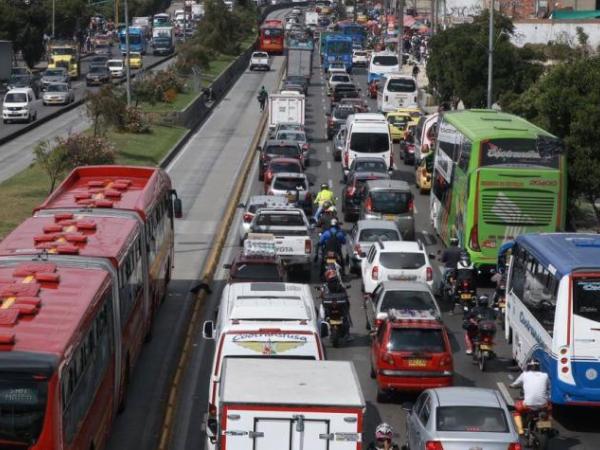At the end of the previous year, the 6,589,184 vehicles circulating in Colombia had a average age of 17.5 yearsthat is, it is an old park, according to a document from Andemos.
(Read: All about the used car auction to be held in Bogotá).
But above that average the most obsolete are in the official sector with an average age of 19.4 years, as revealed by the classification made by the National Association for Sustainable Mobility (Andemos).
And the worst, many of the Colombian cars are so old that they do not meet any emission standard, that is, exceed CO2 emission levels and they are highly emitters of polluting particles.
One of the strange phenomena that happens in Colombia is that despite the fact that it has one of the lowest levels of motorization in the OECD States with 126.5 vehicles per thousand inhabitants, when the average is 435.6. The country has the cities where people waste the most time in traffic on the planet.
Indeed, according to the global traffic performance indicator, Inrix, in 2020 Bogotá was the city where a driver lost the most time in congestion in the world, Medellín ranked 10th and Cali 22nd.
According to another traffic indicator, TomTom TRAFFIC, in 2021 the average number of hours a person lost in traffic in the 10 least congested cities in the world was 21.5 hours a year. In contrast, in Bogotá a driver spent 126 hours a year in traffic, in Medellín 53 hours and in Cali he spent 51 hours.
According to a DNP document, in Colombia 2% of the GDP is lost each year due to traffic jams, a figure that is equivalent to about 16 billion pesos.
Which reveals another harsh reality of the country, there is no adequate road infrastructure for urban mobility, in any of its major cities.
(Also: Colombia increases participation in hybrid and electric vehicles).
Not to mention intermediate cities or small ones. Regarding this issue, the Andemos document points out that there are cities like Armero in Tolima where the average age of the vehicle fleet is 40 years.
Of course there are cities that cause envy like Inirida (Guainia) where the age of the park is 2.5 years, or Albania in La Guajira with 3.2 years of average age of their cars and La Jagua de Ibirico (Cesar) with 3 .3 years of age of its vehicle fleet.
Therefore, from different points including government entities, plans and programs have been suggested to improve the age of cars, including punishing the use of old cars via taxes, mobility restrictions and higher insurance costs.
But so far the country seems to holdr the inertia that the changes that are generated are done by the action of the market.
The task of change
It is necessary to incorporate an environmental criterion in the calculation of the vehicle tax that benefits the newest and most environmentally clean vehicles and discourages the use of obsolete vehicles.
The district policy must have a national framework so that the restrictions on urban circulation contemplate the environmental criterion; for example, that the peak and license plate apply to vehicles over 10 years old.
In terms of clean technologies, there should be a pilot program for the transformation of the official fleet to convert it to zero and low emission technologies, as an example of the State.
Cesar Giraldo














